Spring Ephemerals Along the PHT
The Potomac Gorge is a hotspot of biodiversity just upstream of the Nation’s Capital, Washington D.C. Two ecoregions overlap at the fall line and a wild river runs through. I take multiple dayhikes along the Potomac Heritage Trail (PHT) within the Northern Virginia region during the month of April 2022 in search of spring ephemeral wildflowers.
Early Spring / April 2022 / Mark VanDyke
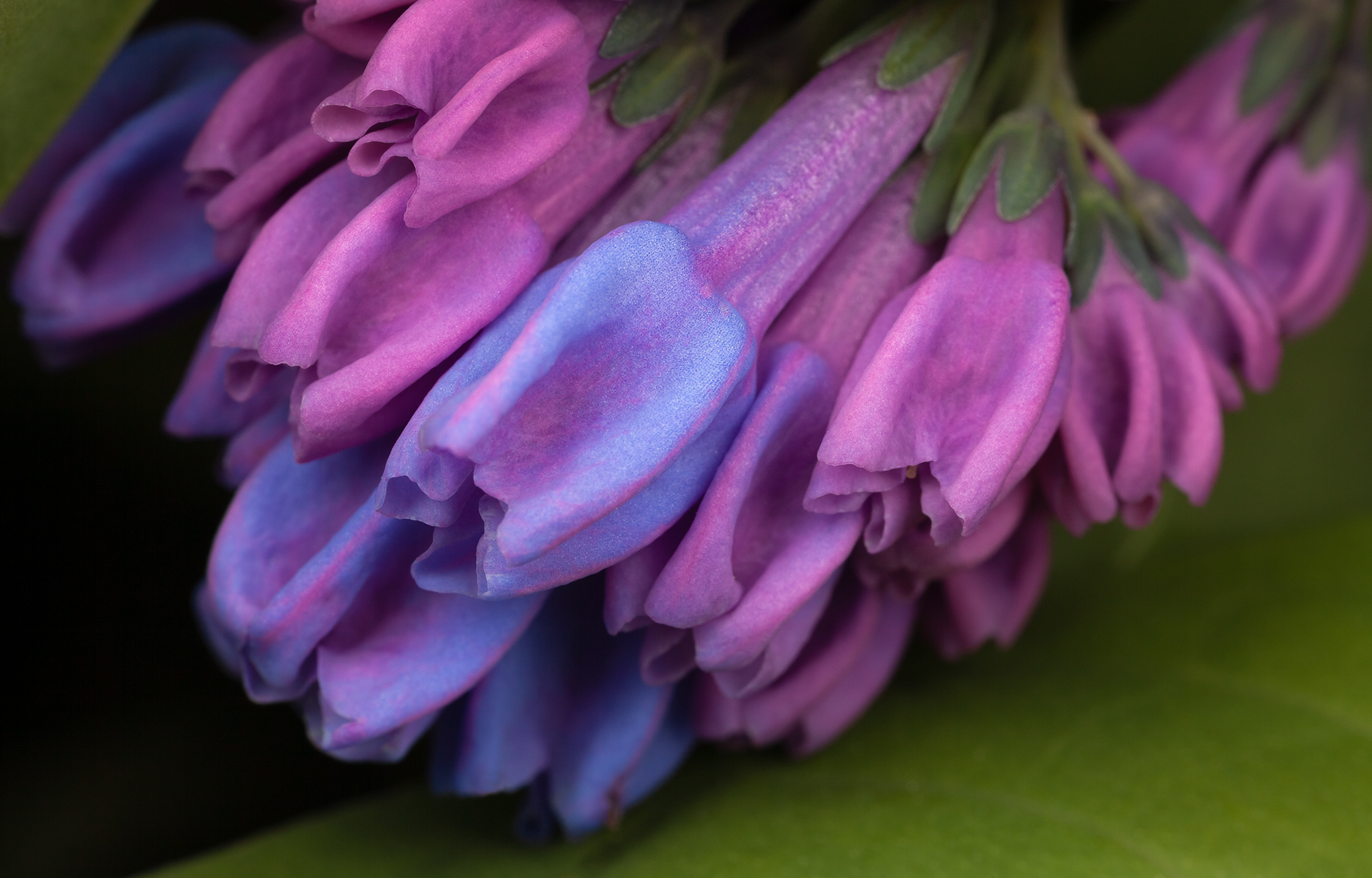
I had to leave before I could fully appreciate The Potomac Gorge. That’s just how travel works for me. It’s less about new places/things and more about the development of a deeper understanding and appreciation for that which I already know.
It’s early April and the tree canopy above is still largely dormant. On the forest floor, however, a careful chaos of plant life is beginning. Dark purple leaves push up through the rich floodplains along the Potomac River. They’ll soon transition to a beautiful blue/green as they begin their service as solar collectors of the ample spring sunshine. Some are ahead of the curve. Tiny buds show. It’s the beginning of Virginia Bluebell season along the Potomac Heritage Trail and I’m anxious to put my lens on some wildflowers!
Over the next several weeks, I return two to three times a week to various access points up and down the Potomac River in Northern Virginia. While the Potomac Gorge technically begins at Great Falls–a set of cascades marking the fall line transition zone–I find myself drawn to the floodplains just above the gorge for their relative solitude and botanical abundance. Three to four hours at a time, I day hike and observe the spring ephemerals. I must admit, the Bluebells capture the lion share of my attention and interest.
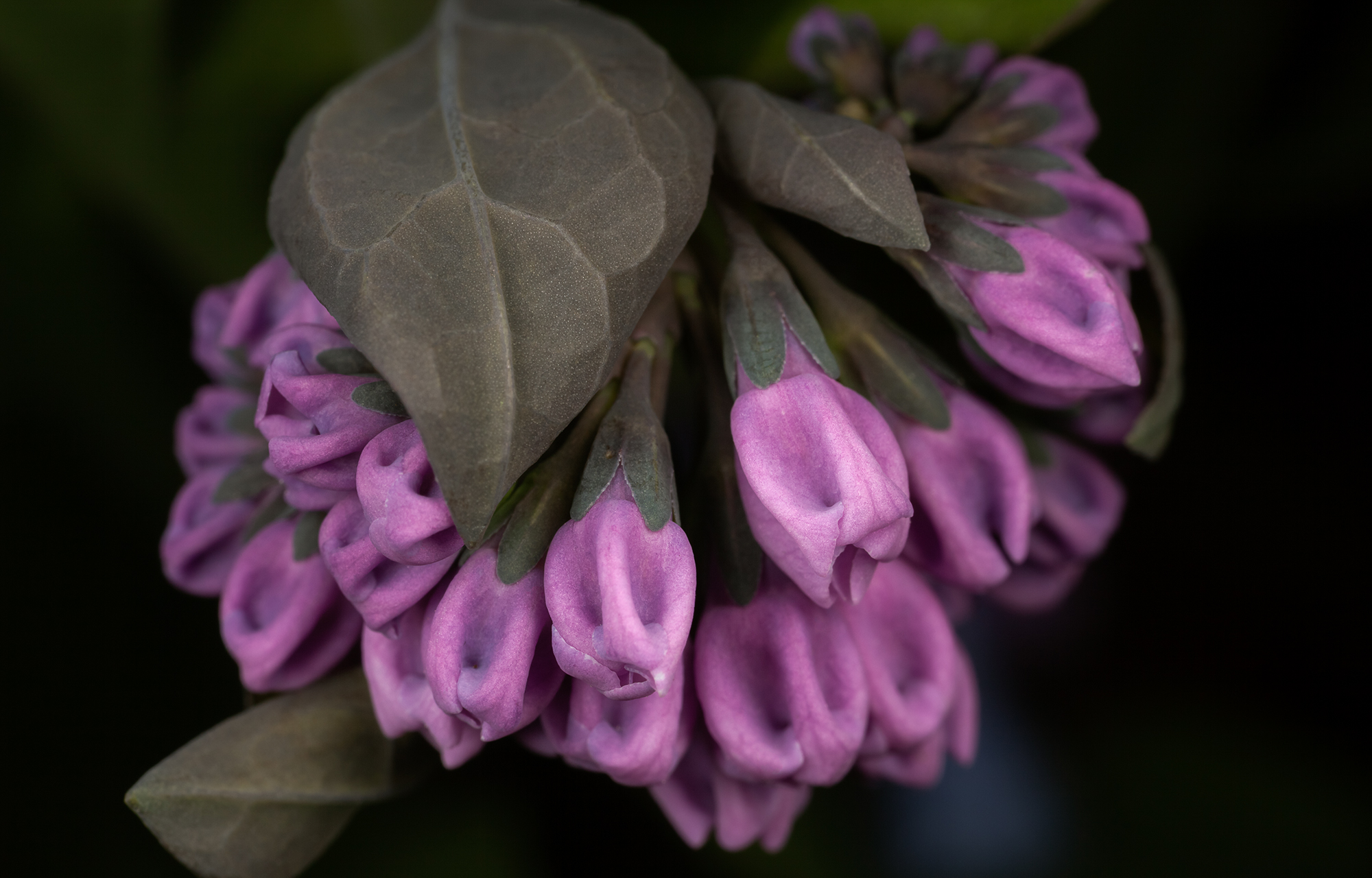
(Above): The stars of the show were the Virginia Bluebells (Mertensia virginica). These wildflowers carpeted the floodplain forests with their colorful blooms.
The Potomac Gorge begins at Great Falls, a series of waterfall-like cascades along The Potomac River about fifteen miles upstream of Washington D.C. Great Falls marks the fall line, a geologic shift from the harder rock of the Appalachian Piedmont upstream to the softer rock of The Atlantic Coastal region downstream. Almost four hundred miles in length, The Potomac River flows from Fairfax Stone in West Virginia to Point Lookout in Maryland. It’s the fourth largest watershed on the East Coast and the second largest watershed emptying into the Chesapeake Bay. The river itself is largely without high dams and reservoirs. Matthew Logan, former President of the Potomac Conservancy, calls the Potomac River “probably the wildest urban river anywhere in the world.”

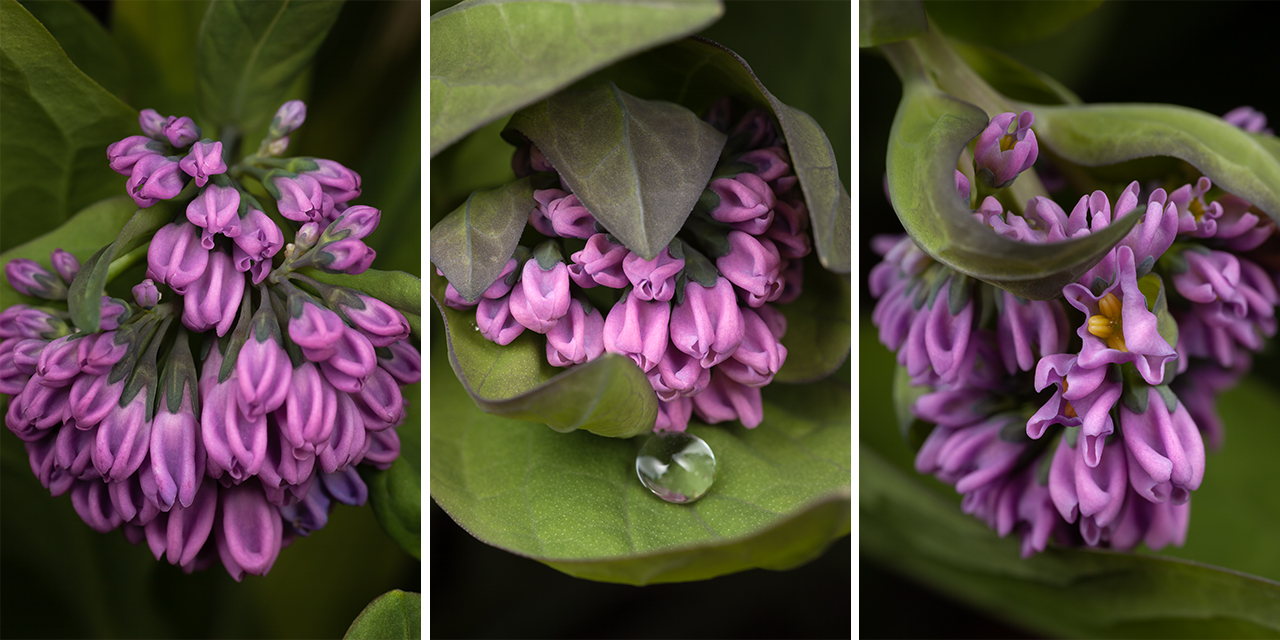

(Above): I find the bud stage of Virginia Bluebells to be the most exciting behind the lens.
Straddling two ecological zones (Piedmont and Coastal), The Potomac Gorge features a river that is free to flood and shape the shoreline over time and at will, as well as to deposit seeds from far upstream in the distant Appalachian Mountains. In short, the plant diversity of the Potomac Gorge is both high and unique. Jeffrey P. Cohn writes in the January 2004 issue of Bioscience Magazine that over 1400 hundred different plants have been identified within the Potomac Gorge, three hundred of which are tracked species of concern in the DMV (District of Columbia, Maryland, and/or Virginia). Cohn further writes that the Potomac Gorge has “perhaps the most diverse flora located within an urban area on the entire east coast.”
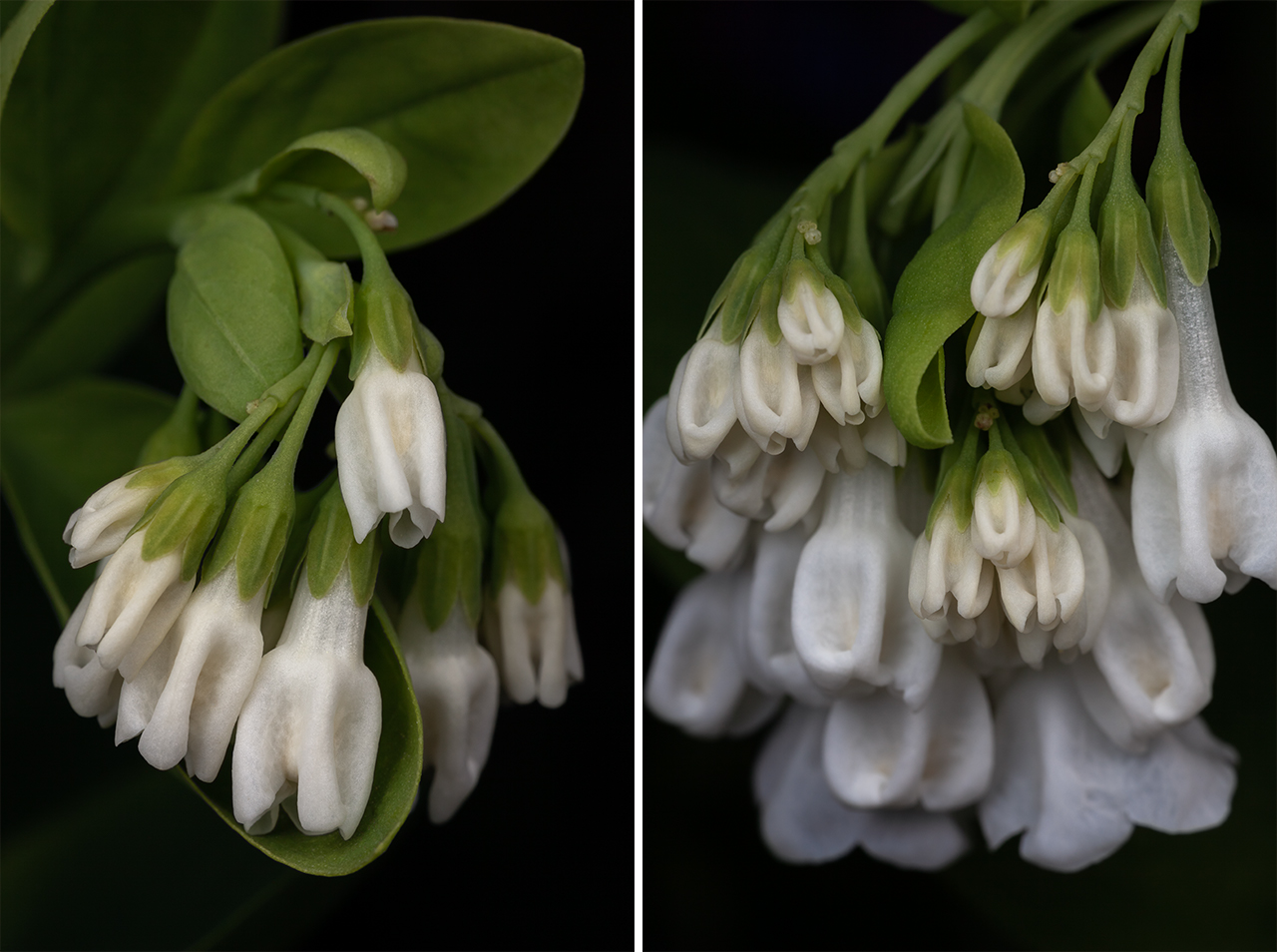
(Above): White is considered a rare color form for Virginia Bluebells.
Richard Wiegand, regional ecologist for the Wildlife and Heritage Service of Maryland’s Deptartment of Natural Resources states in the same Bioscience article that The Potomac River Gorge “is one of the most biologically diverse habitats within the whole National Park system.” What? As a photographer that routinely travels to Great Smoky Mountains National Park (GSMNP) and the greater Southern Appalachian Mountains, this statement alone catches me totally by surprise. Could it be possible that all these years I’ve had such a place in my metaphorical backyard, largely unbeknownst to and unappreciated by me? How has it taken me so long to understand and appreciate this fact?
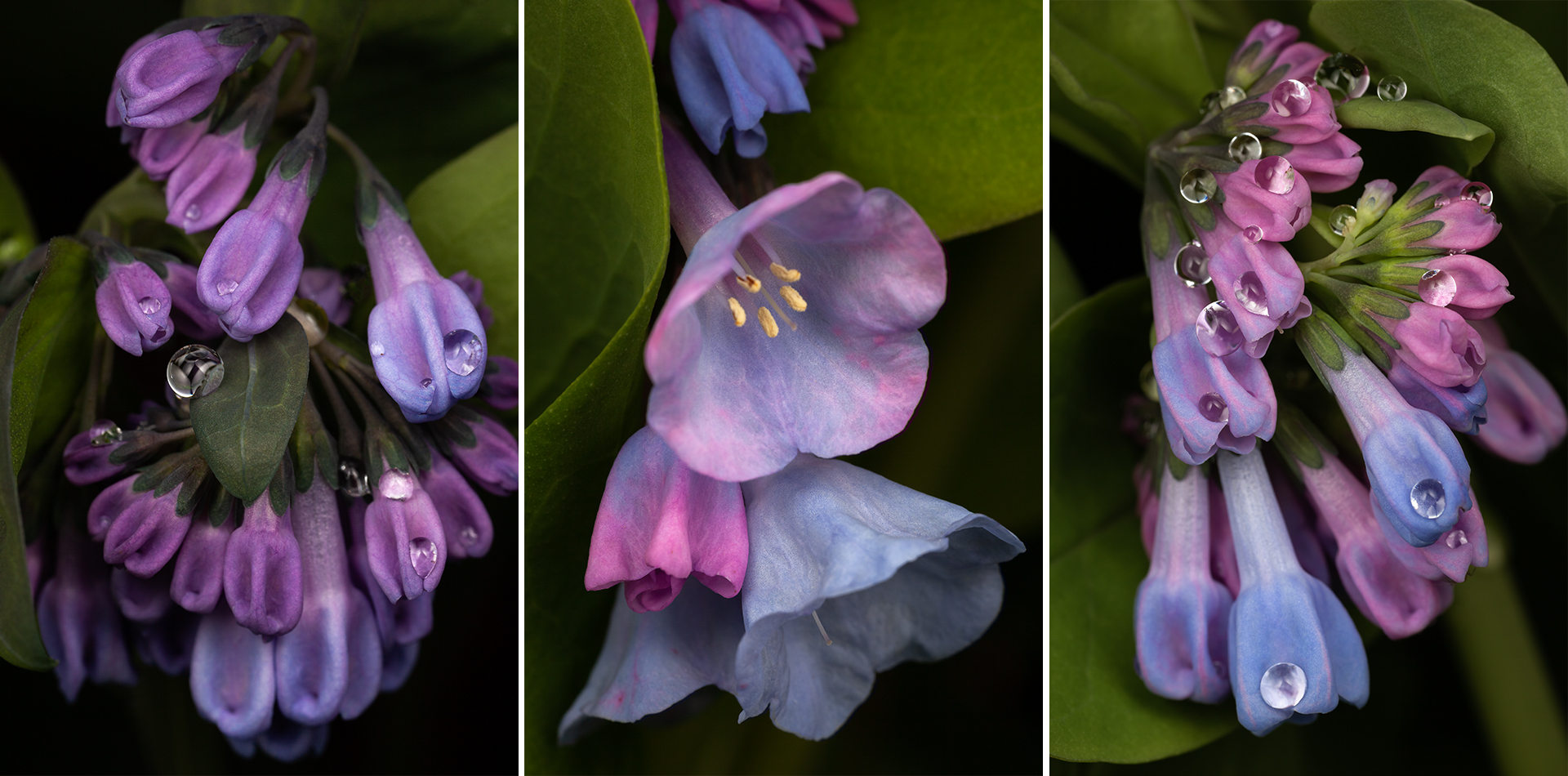
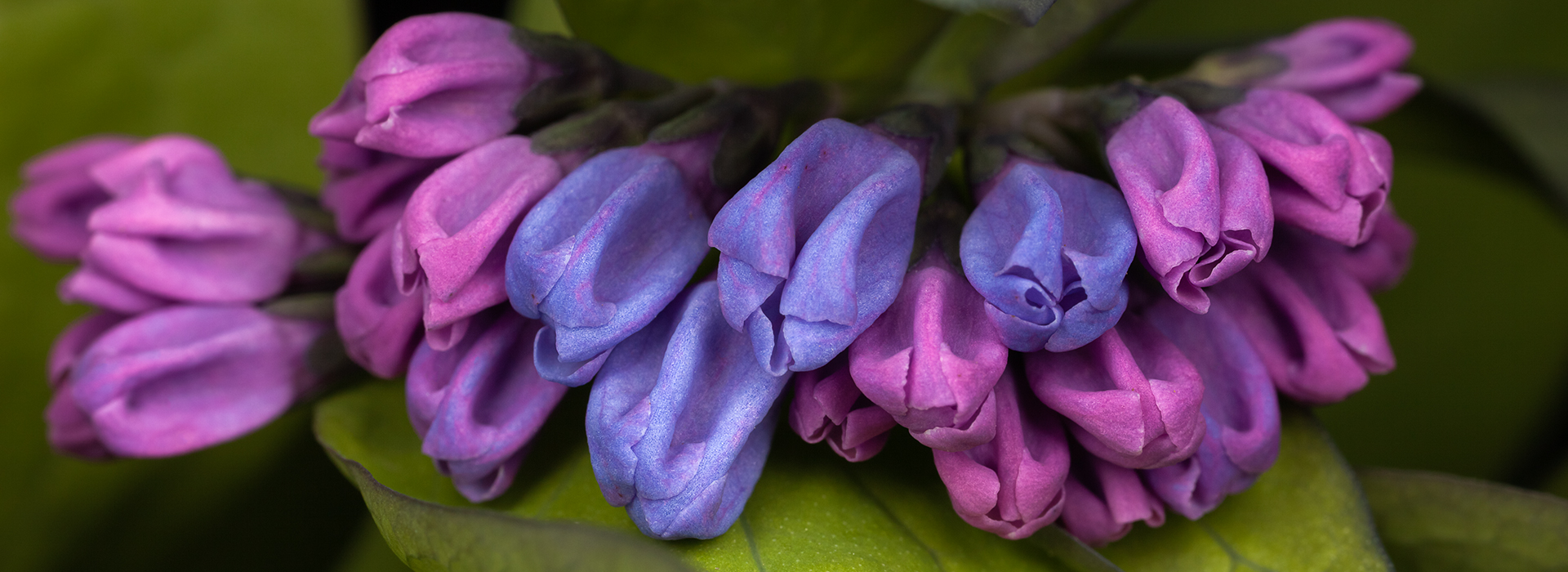

(Above): No matter how many times I told myself no more, I would find another clump of Bluebells that I just had to photograph.
Most of the unique biodiversity of The Potomac Gorge is found on the dry bedrock terraces created by the flood regime of the Potomac River. Bedrock terrace habitat is relatively unique for rivers. Periodic flooding of these areas washes away growth, rearranges the soil and plants, and deposits new seeds, sometimes from far away. As a result, these are very dynamic habitats. Unfortunately, on the Virginia side of the Potomac, most of these habitats are off limits to visitors. A short field trip over to the Maryland side of the river, however, will give visitors greater access.

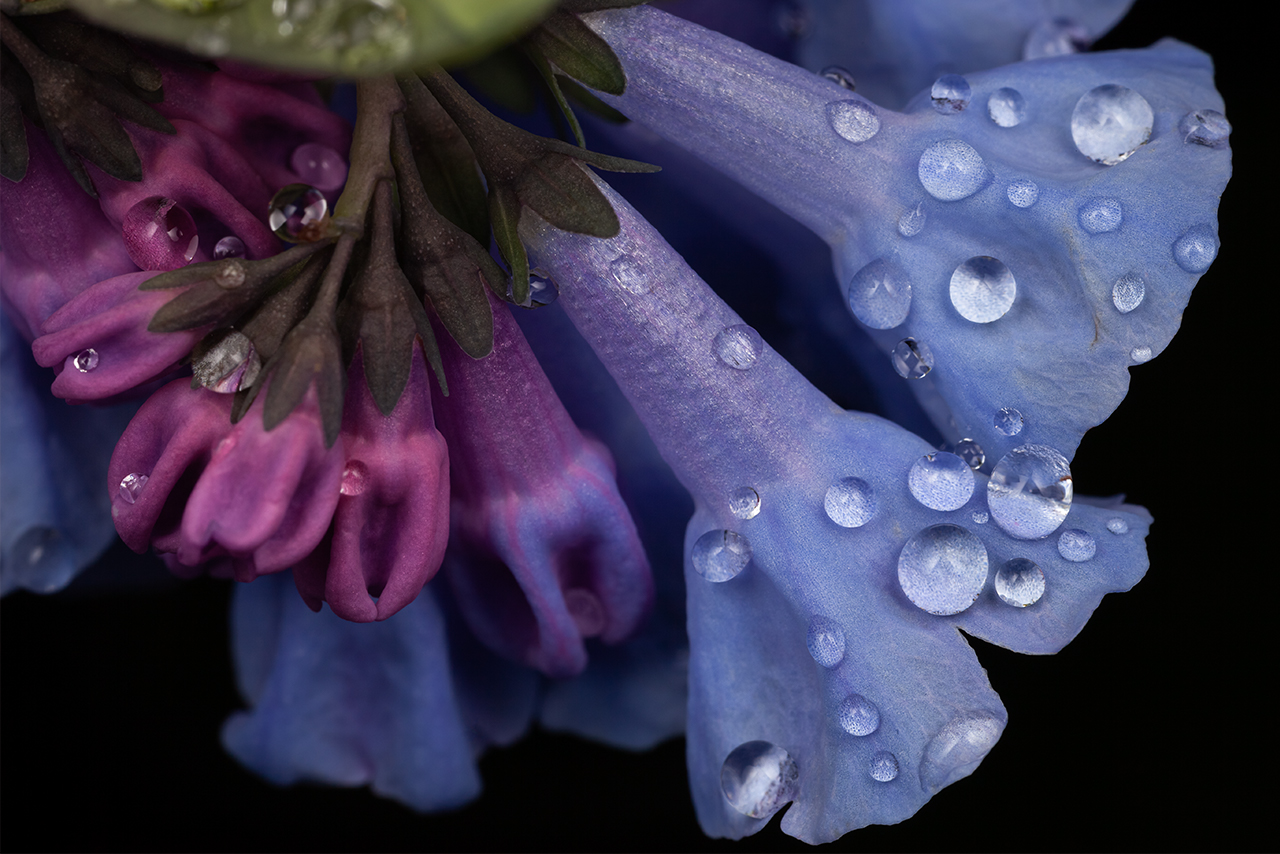
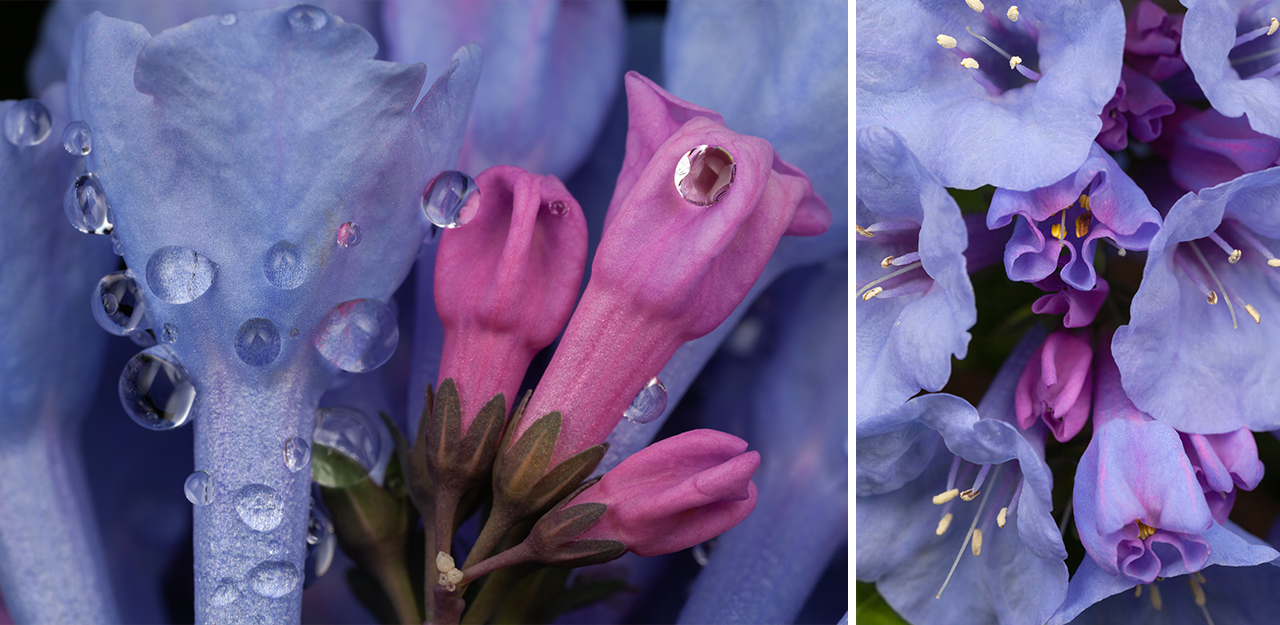
(Above): Following a light rain the Bluebells were pure magic.
Bedrock terrace habitat is not on the menu for me this spring, despite my growing curiosity. Instead, I’m just upstream of The Potomac Gorge within the rich floodplains and upland forests of Riverbend and Seneca Regional Parks. It’s within these smaller, local, regional parks where I find the perfect mix of solitude and abundance to get myself lost in the local landscape. These are the parks that I’ve grown up in: where I hiked with my parents as a kid, mountain biked as a teenager, and put on endless miles walking our dogs over the years.
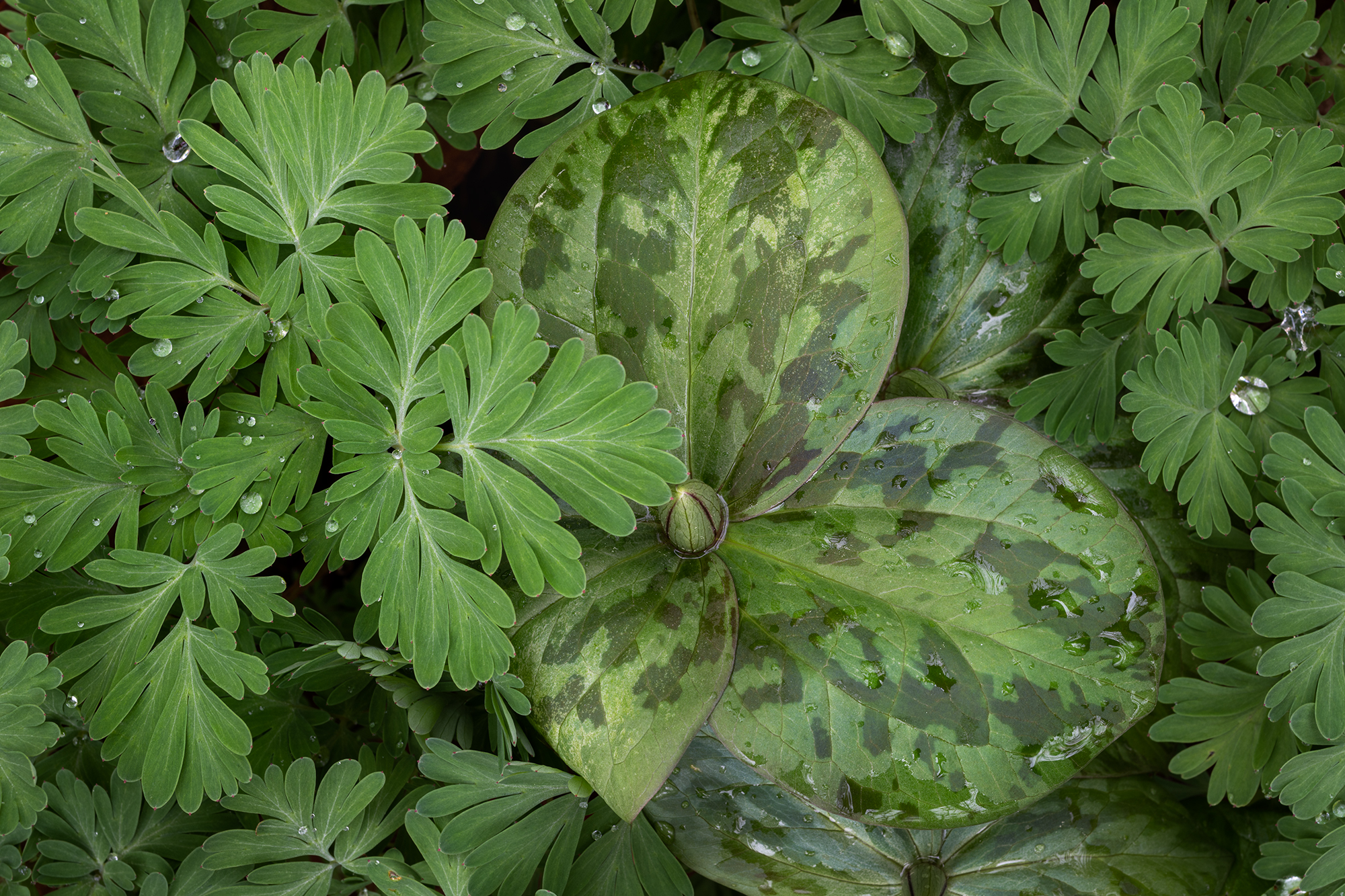

(Above): Sessile or Toadshade Trillium was common in floodplain habitat along the Potomac River, often growing with Bloodroot, Dutchman’s Breeches, and Squirrel Corn.
Shooting so close to home is both beautifully convenient and frustratingly difficult. On the one hand, I don’t have to plan for an overnight trip and/or travel to photograph the Potomac River Gorge. I don’t have to sleep on the ground in a tent and I don’t have to endure the changing moods of Mother Nature throughout my stay. A shower and a hot meal is always nearby. And my expenses are mercifully low: one tank of gas can cover dozens of return trips to the Potomac River.
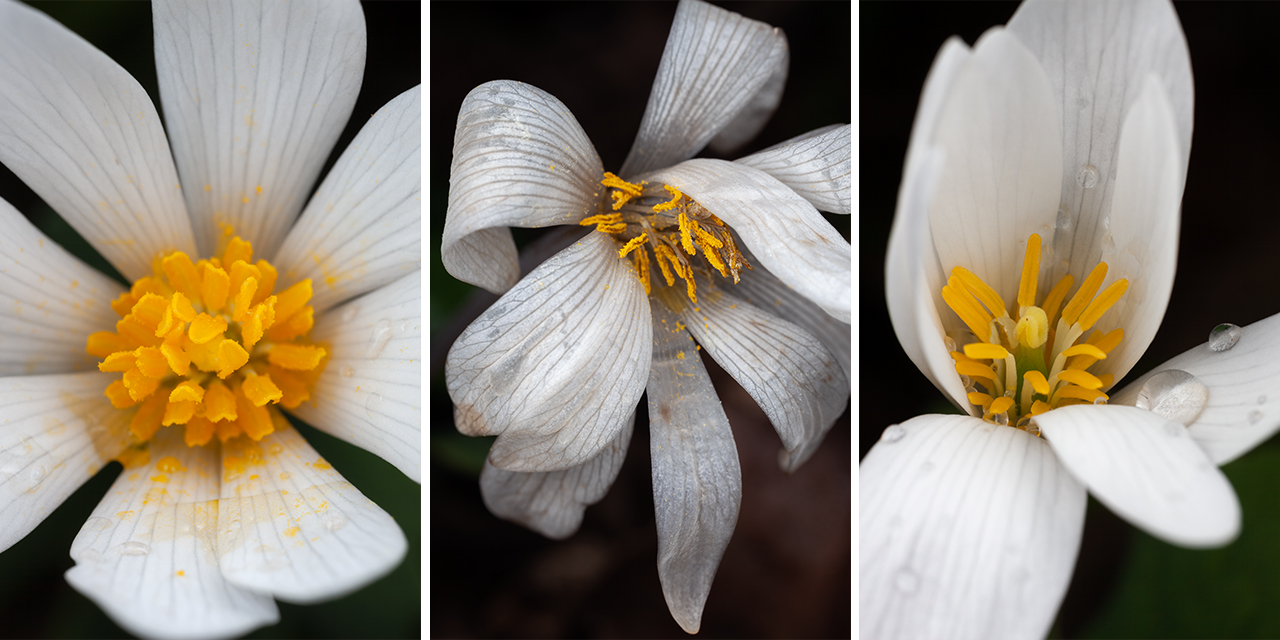
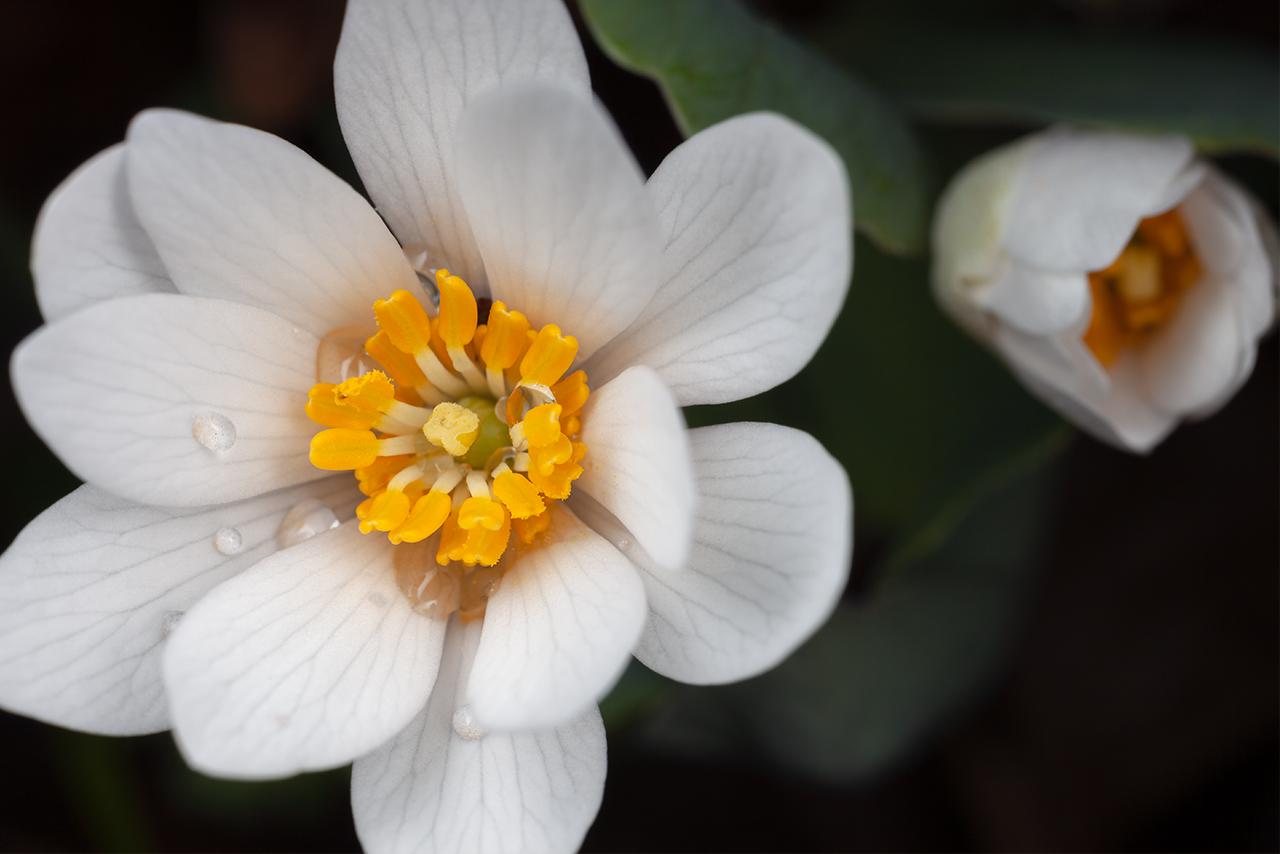

(Above): A few heavy frosts put a hurting on the Bloodroot bloom; however, most did just fine and flowered out beautifully.
On the other hand, it’s frustratingly difficult to get my head completely into the task of photographing these little beauties. All of the many conveniences mentioned above undermine my natural ability to find the creative pocket. Life’s little interruptions are always so close; they tend to creep into the best laid plans. And the frequent but small bites of shooting time make the overall experience of shooting the spring ephemerals on the Potomac far less immersive than my larger expeditions further afield. When I know that in the afternoon I’ll be back behind the computer doing some business task, it’s difficult to clear my mind and find the space for creative work. First world problems. I know.
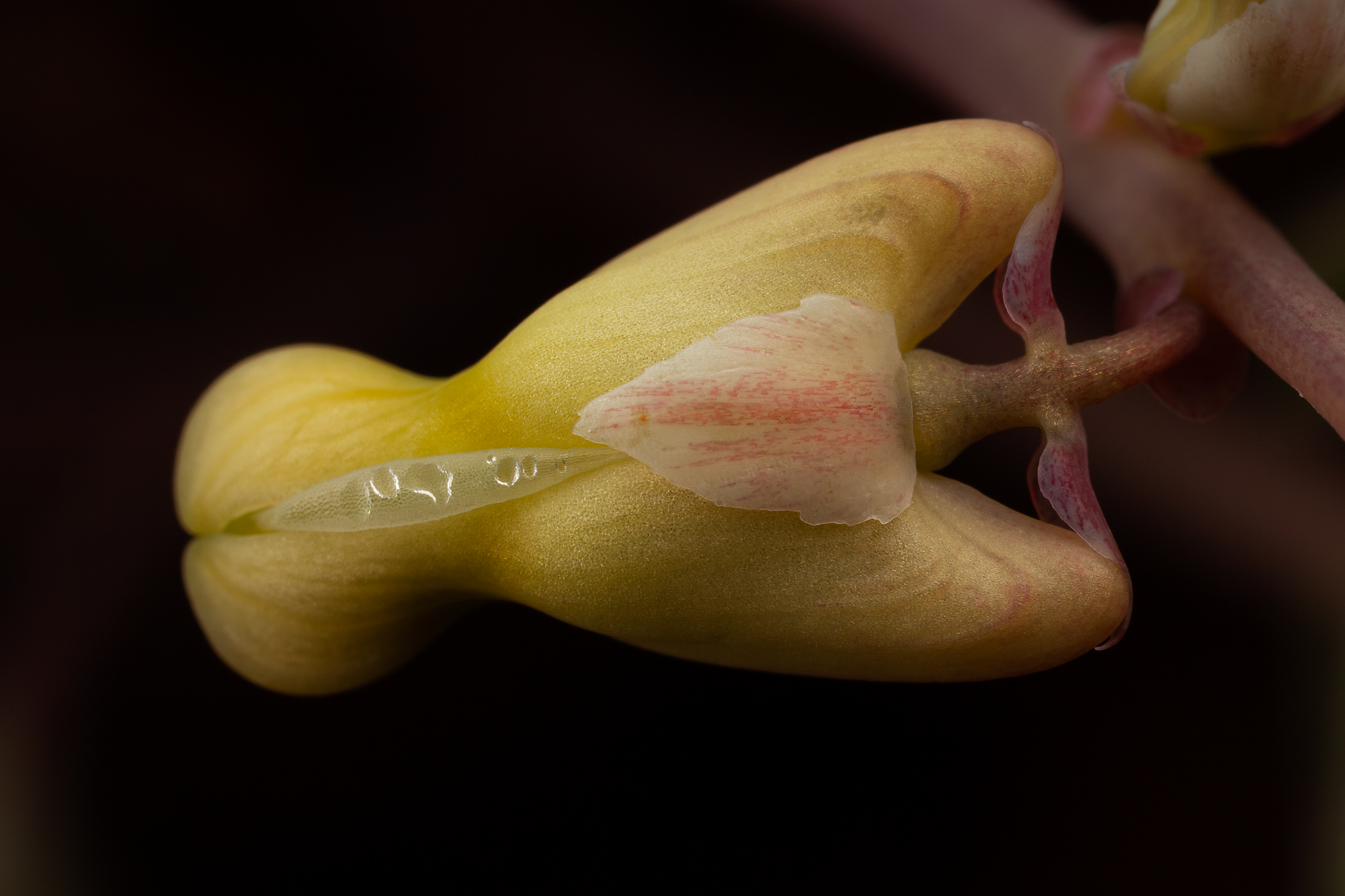
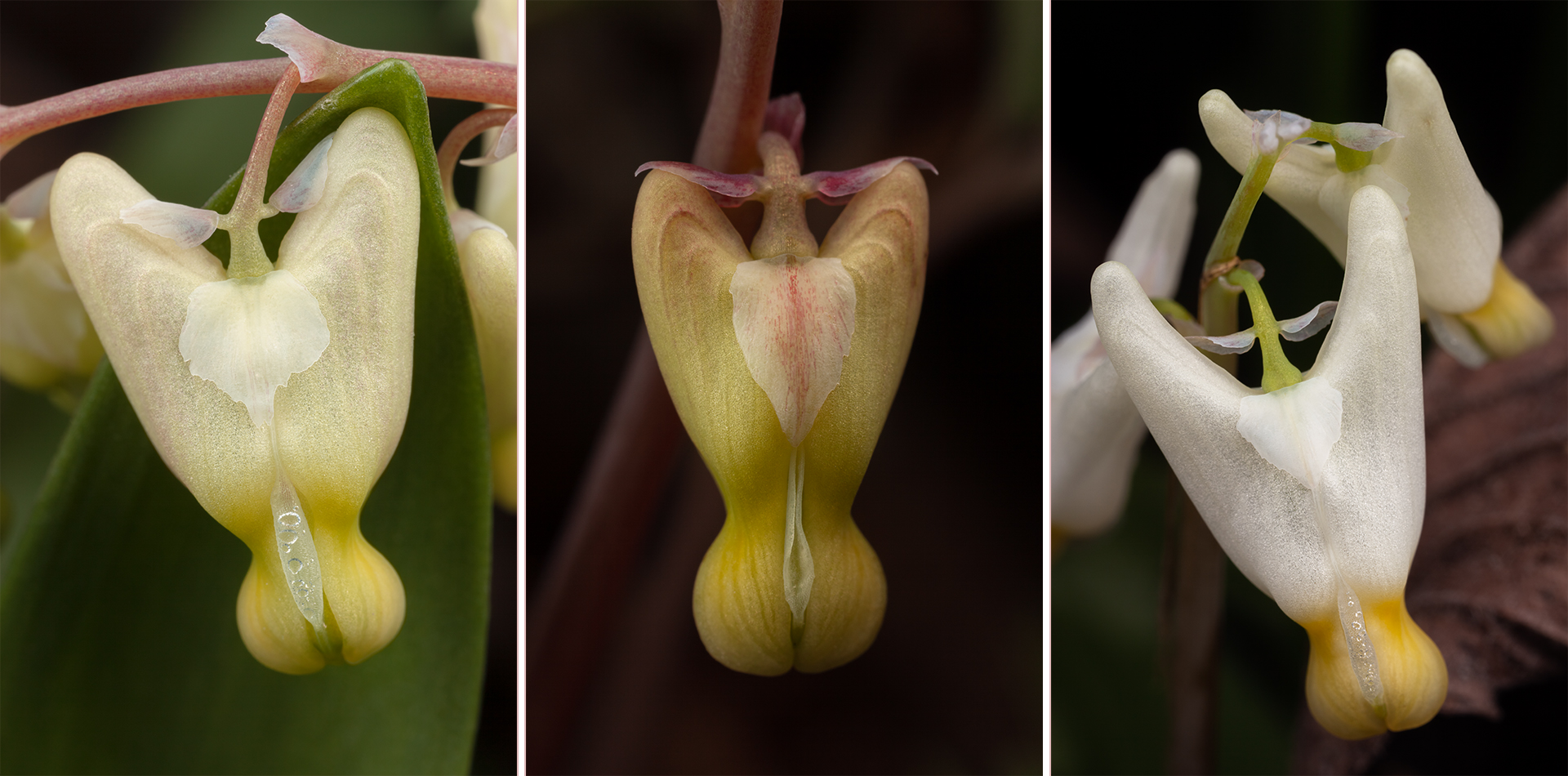

(Above): Dutchman’s Breeches have always captured my imagination. Their resemblance to trousers hung upside down on a clothesline always makes me smile.
Whatever the case, I walk the Potomac Heritage Trail and I sweep my gaze downward and left to right. I’m seeking colors and patterns that have imprinted meaning on my brain. When I started photographing flowers, I missed most things in the field. I simply wasn’t trained to “see” or recognize the plants that often crowd together and line the trails. Only the most colorful or sizeable plants cracked my otherwise distracted attention. Botany-minded individuals slowly broke me down and taught me to recognize the leaves first: lacy, veined, delicate, blue/green, serrated, eliptical. The list of attributes is as diverse as the plants themselves. Each with their own signature. And it’s these signatures–these unique leaves and stems–that allow one to walk through the woods and understand what’s likely to come, even before the flowering begins.
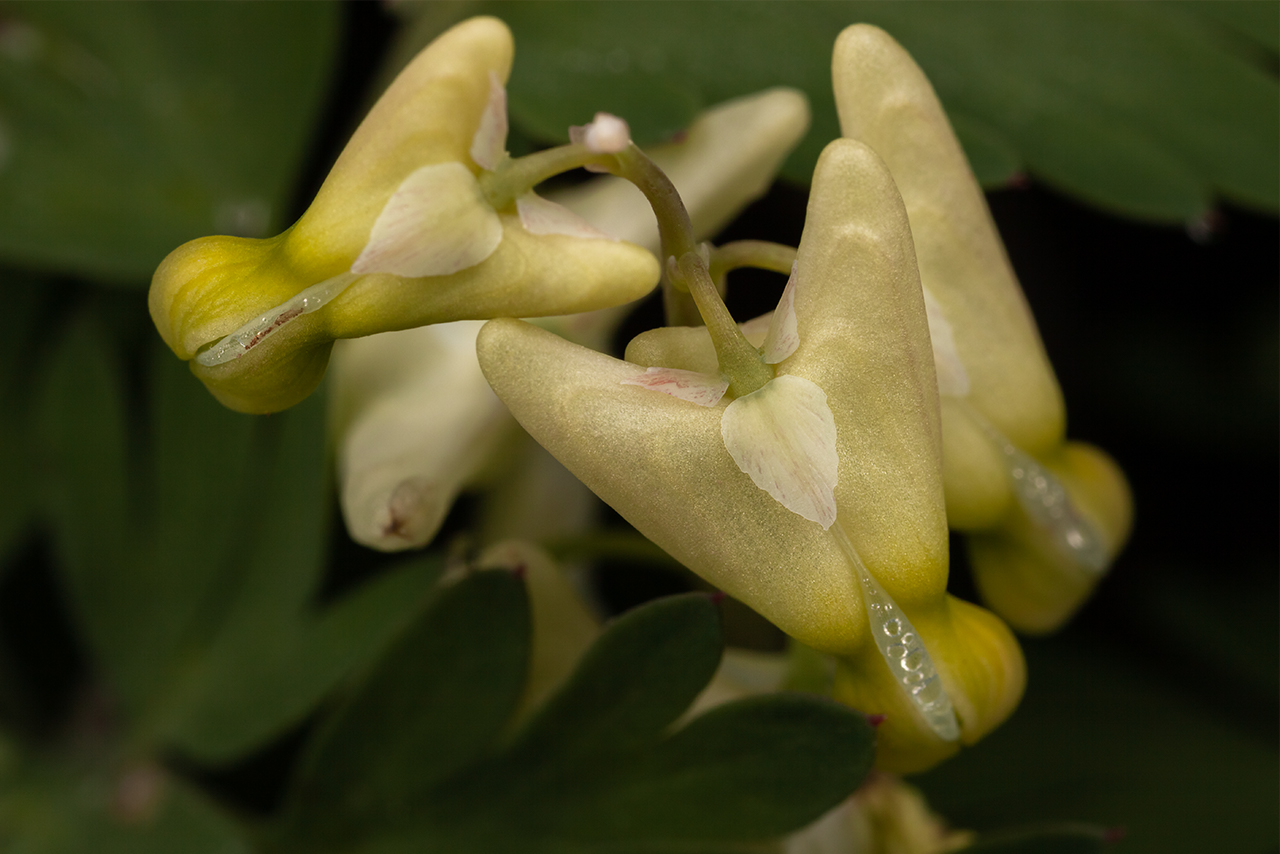
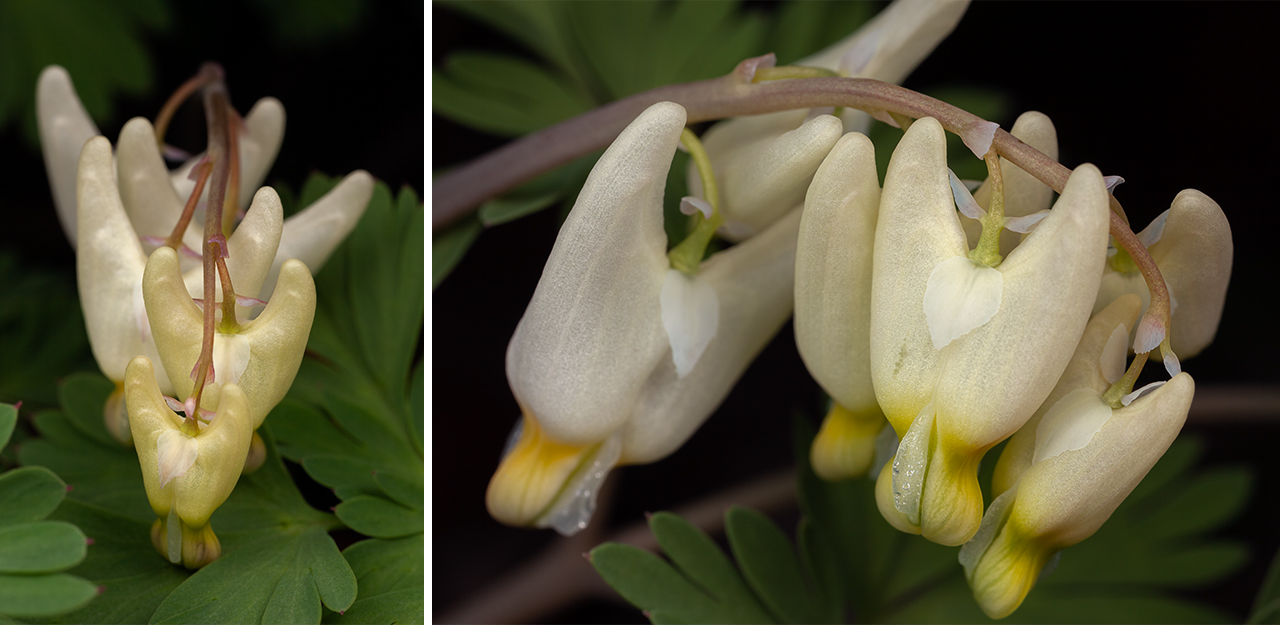
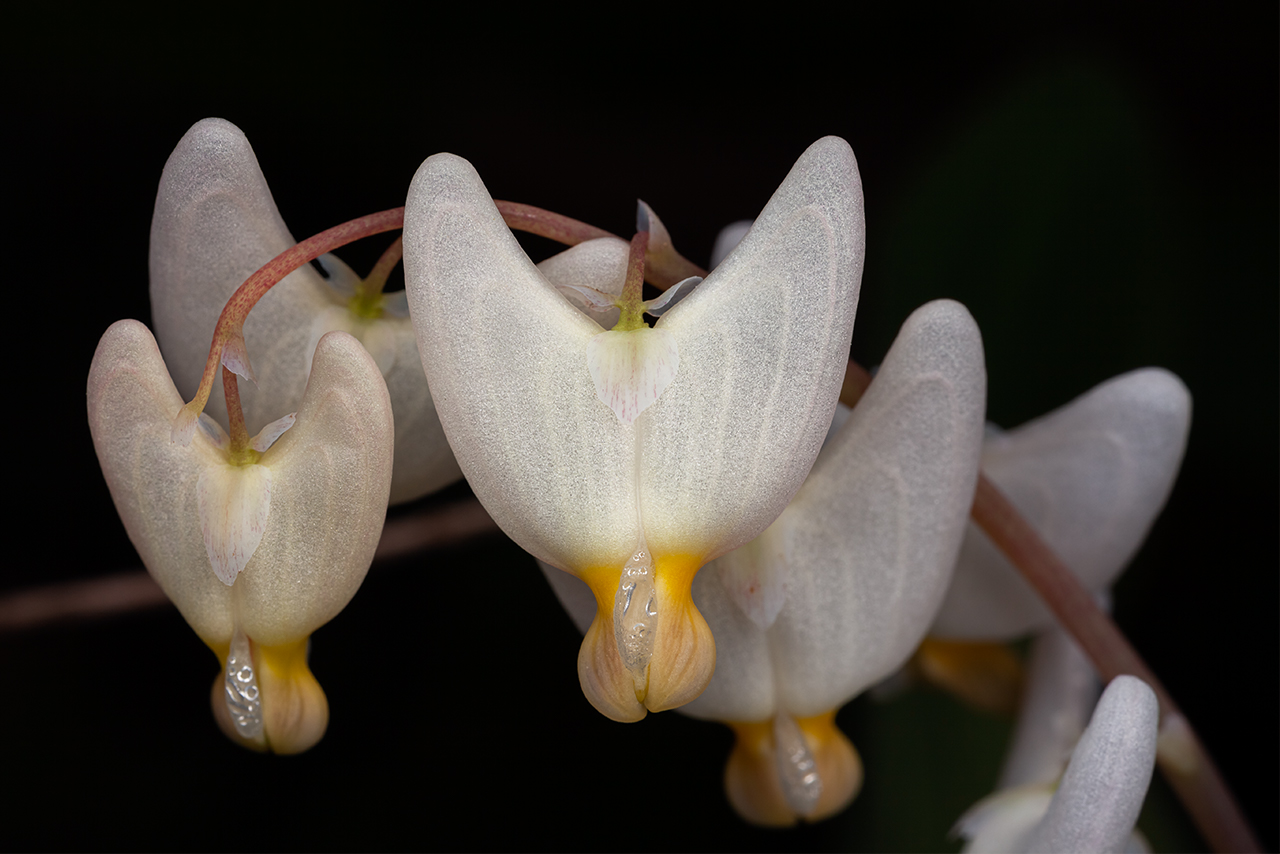
(Above): Dutchman’s Breeches wildflowers in bloom.
I’ve always had a profound respect for naturalists. I realize, somewhat begrudgingly, that my experience–on the same trail and in the same place–is so much less enriched. Forget Netflix, a naturalist just needs to open the door. The world is endlessly beautiful and abundant. There’s acknowledgement of what is common and what is rare. And there’s an understanding of how it all relates, either reinforcing the system or actively working to displace and break it apart. In short, there’s a comfort and a relational understanding of the world–the real physical world, not the virtual and fantasy worlds we work feverishly to create and inhabit. I spent nearly a decade working in the built environment trades–learning how to “improve” land for human needs and desires. As such, it’s absolutely wonderful to meet those who see and experience the natural world as plentiful, whole, and entirely without need for improvement of any kind.
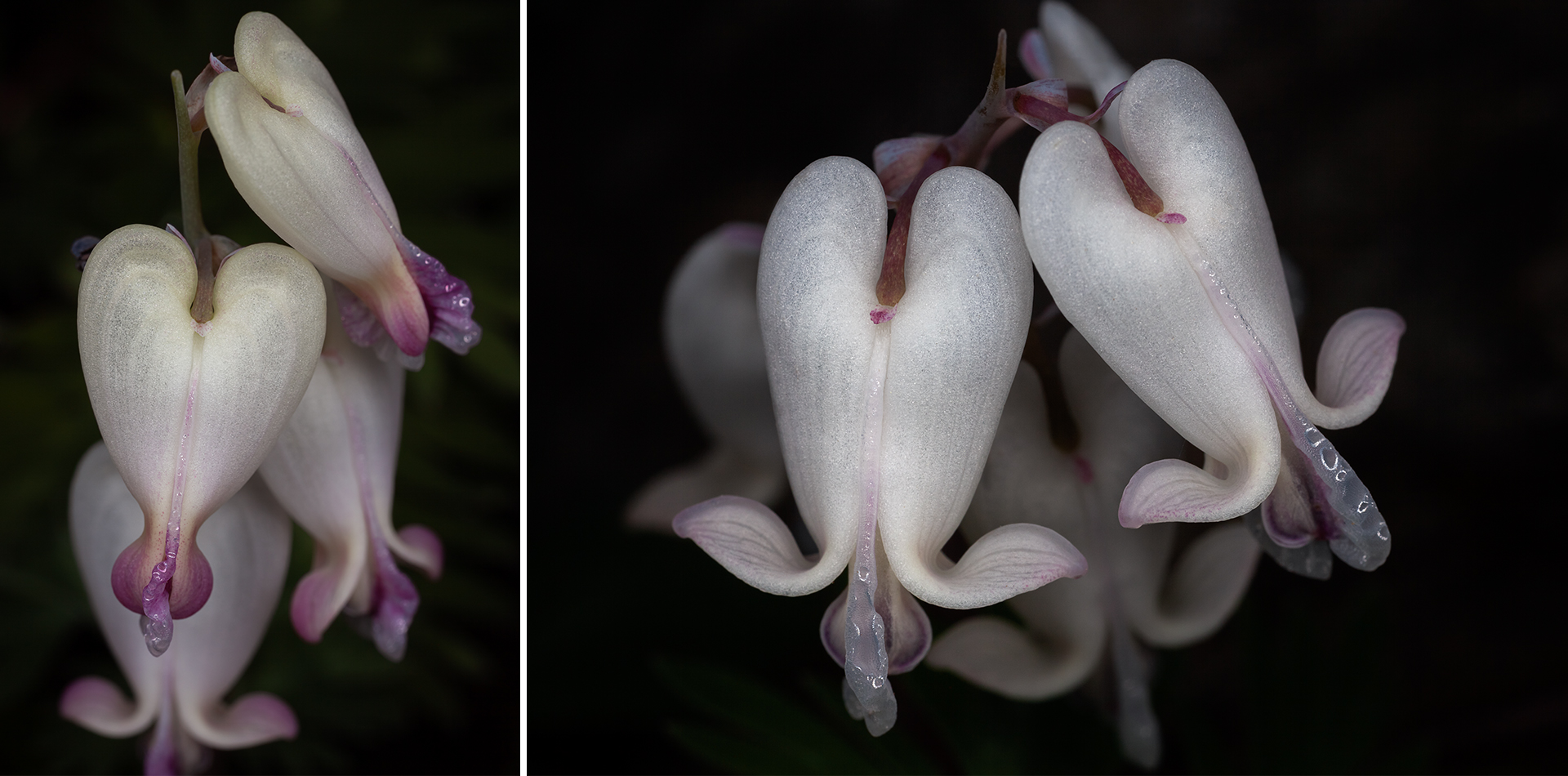
(Above): While similar to Dutchman’s Breeches, Squirrel Corn wildflowers are, perhaps, even more beautiful with their heart shaped curves and blushing purple accents.
It’s this kind of richness and diversity that I’m after with my own photography. Practicing primarily in the Southern Appalachian Mountains–a place defined by it’s unrivaled biodiversity–leaves me hungry to represent more than just a sunrise or sunset at a popular viewpoint. After ten years of chasing business by aiming a camera at the natural world, I know what will sell and what won’t sell, for me. And I know what will and won’t grab attention for me, especially amongst my peer group of fellow photographers. As I pivot my personal practice towards representing a deeper and more diverse subject matter within the spaces that I love, I find myself moving further and further from the interests of my current photography business. Perhaps I’m just beginning the long work of developing a new audience and new clients. Perhaps I’m just in transition. It’s hard to know.
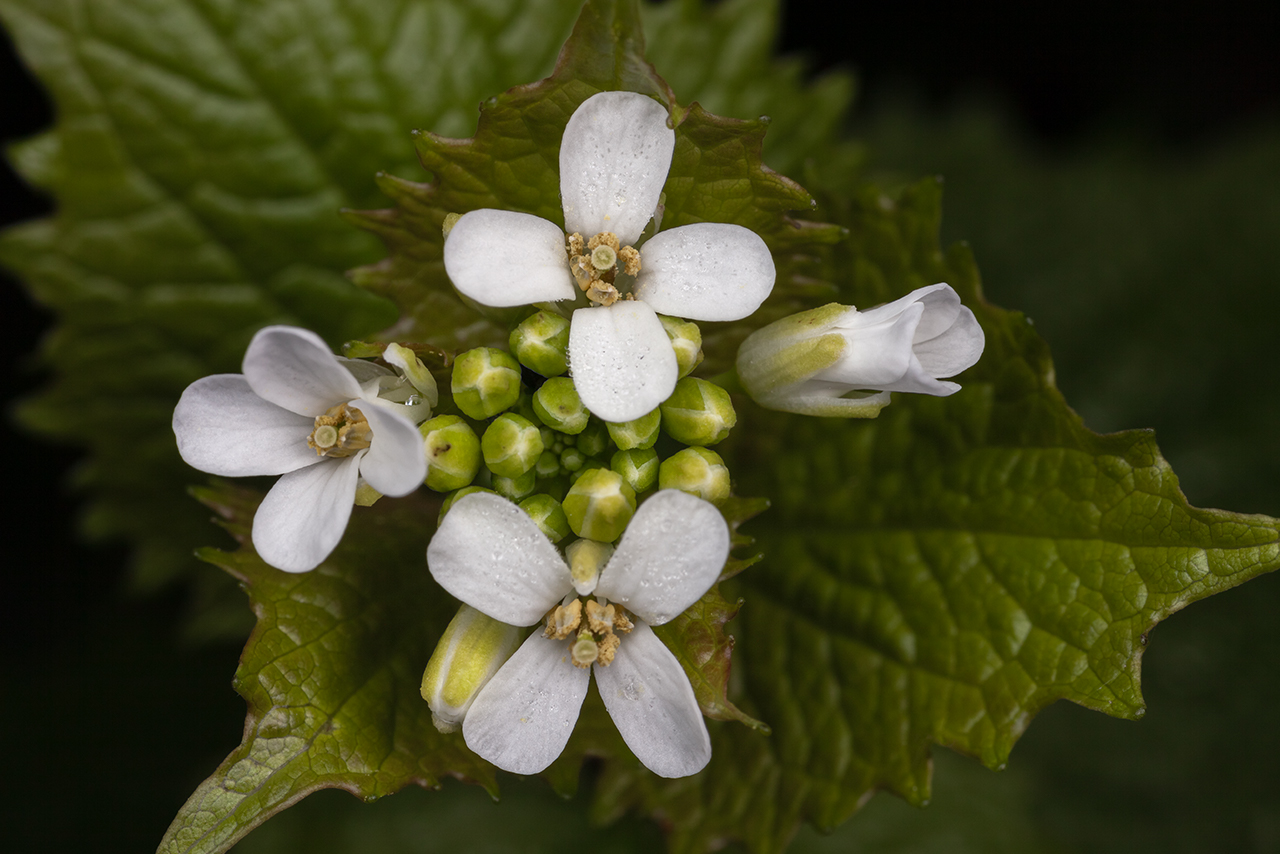
(Above): Garlic Mustard (Alliaria petiolata) is a non-native invasive that threatens native habitat along the Potomac River.
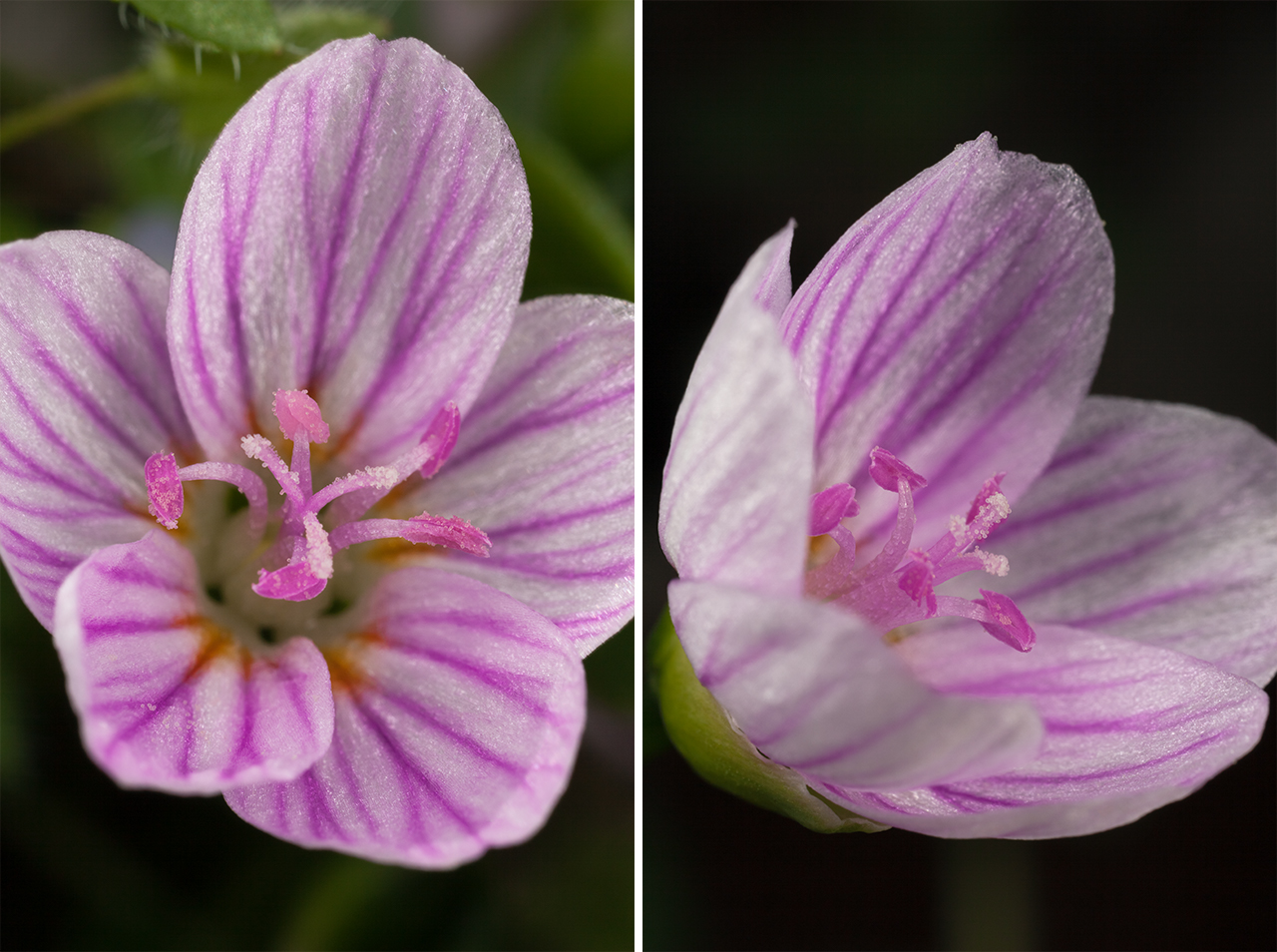
(Above): It’s the magenta anthers that catch my attention with Spring Beauty (Claytonia virginica) wildflowers.
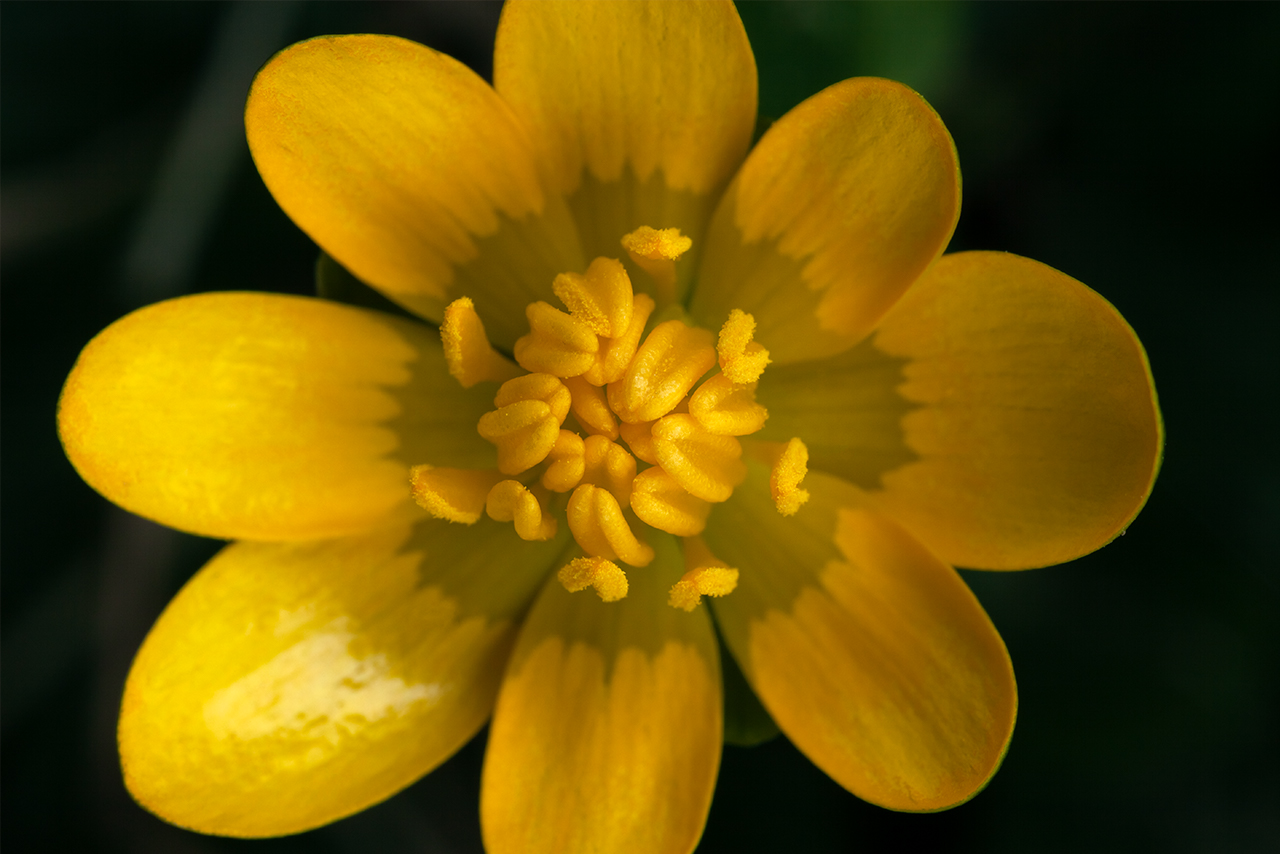
(Above): Lesser Celandine (Ficaria verna) is another non-native invasive species that grows along moist river and stream banks.
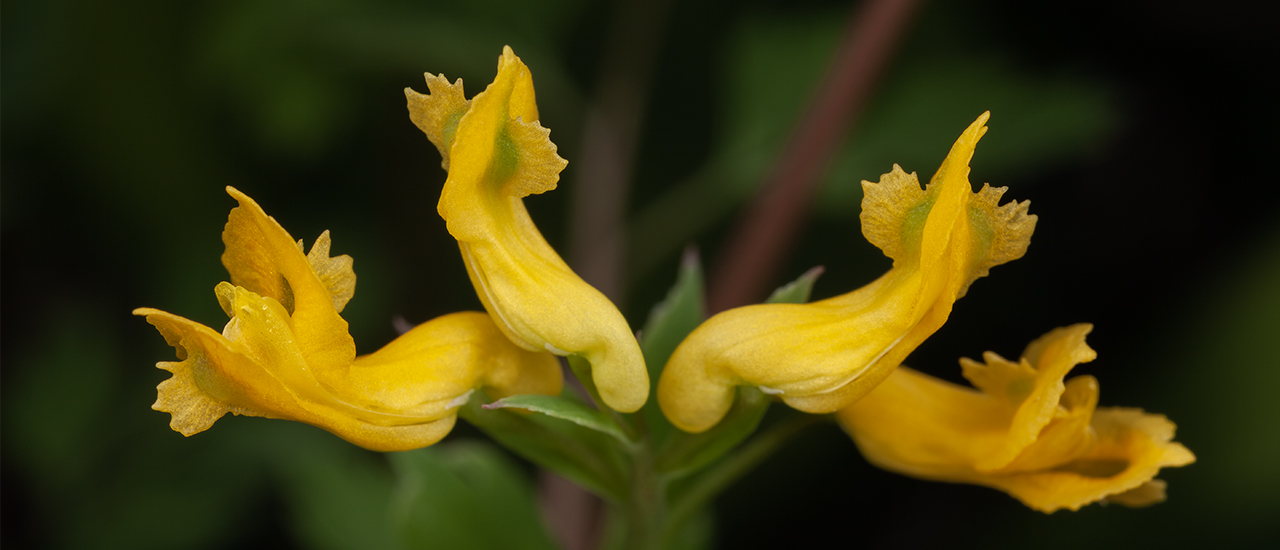
(Above): Corydalis flavula, or Yellow Fumewort, can be found along stream and river floodplains.
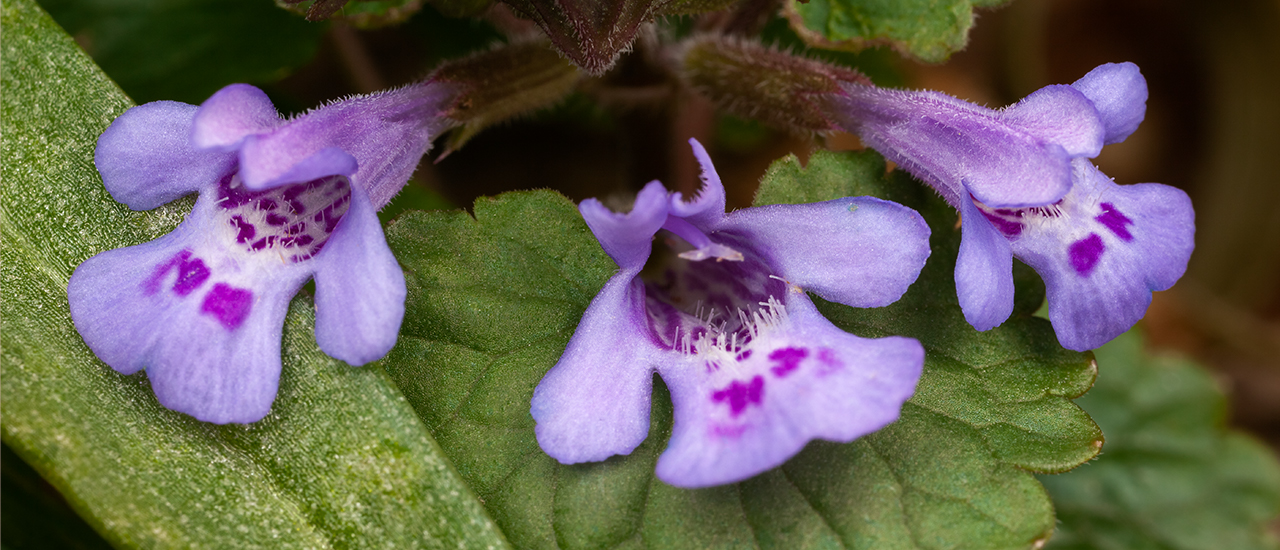
(Above): Creeping Charlies (Glechoma hederacea) are another non-native invasive species that are pretty much everywhere.
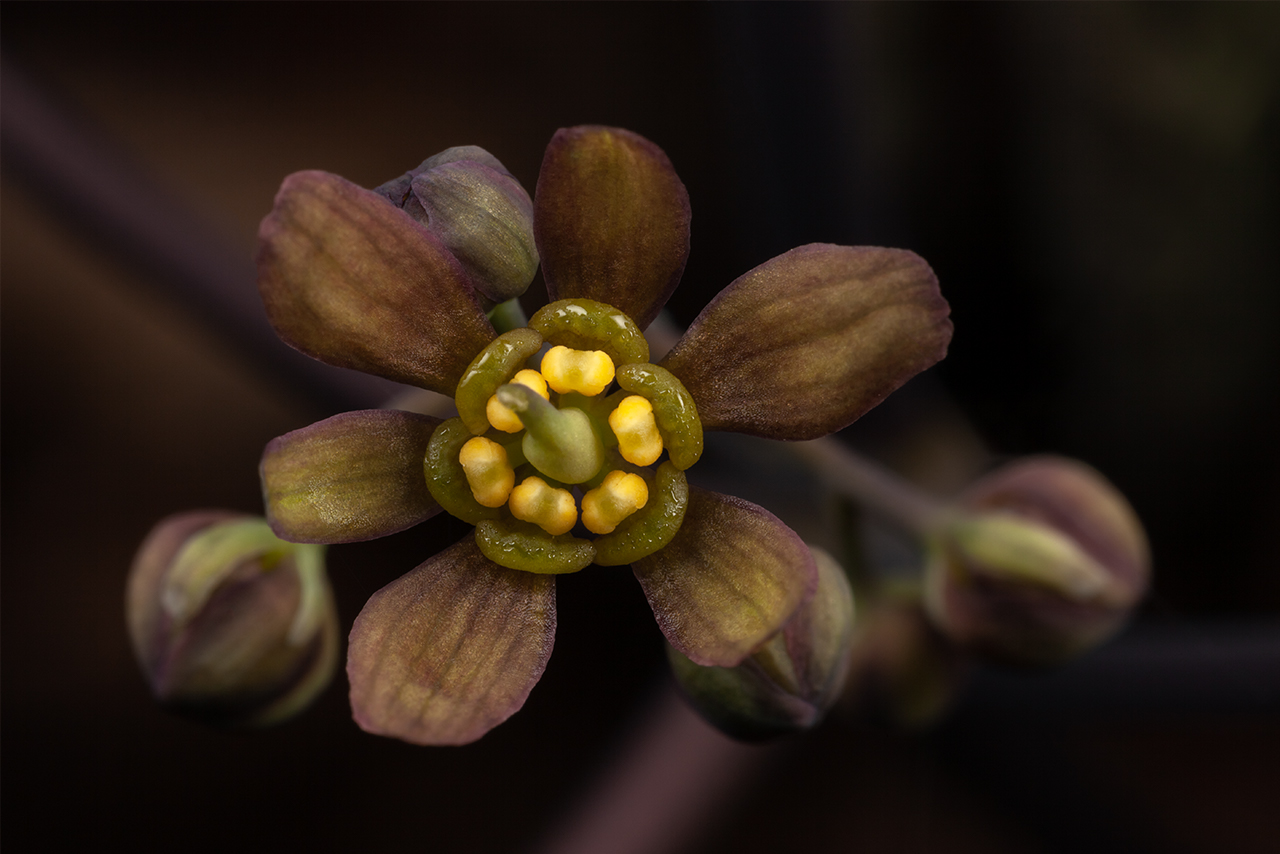
(Above): Early flowering Blue Cohosh (Caulophyllum thalictroides) was found along shaded hillsides and moist coves.
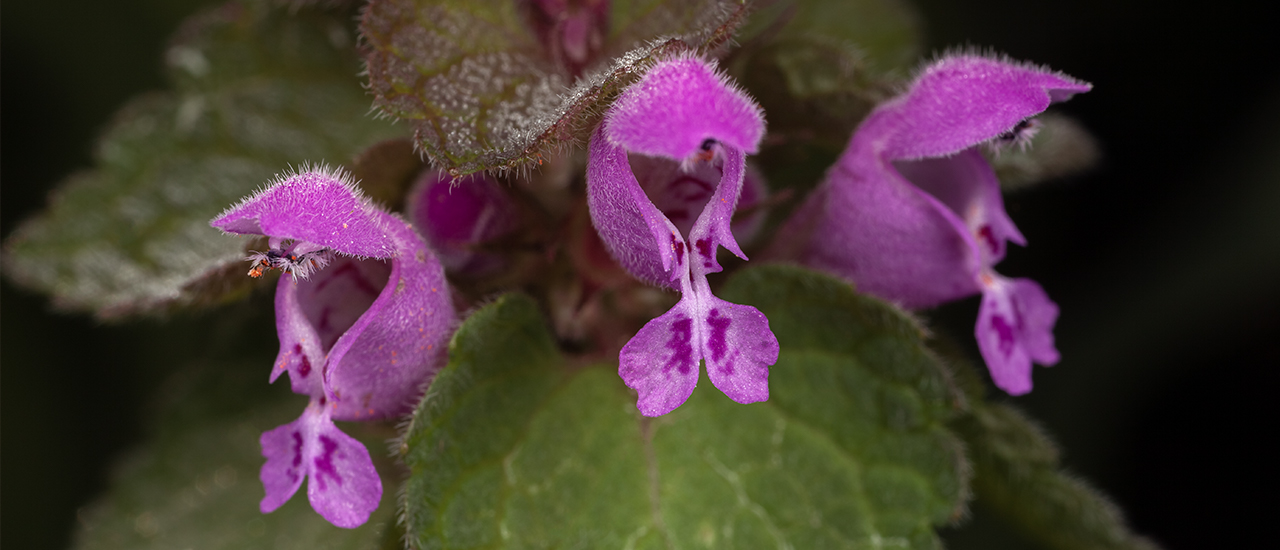
(Above): Purple Dead Nettle (Lamium purpureum) is a non-native weed-like plant that I found near trail edges and meadows.

(Above): Native Wild Blue Phlox (Phlox divaricata) in both bud and flower.
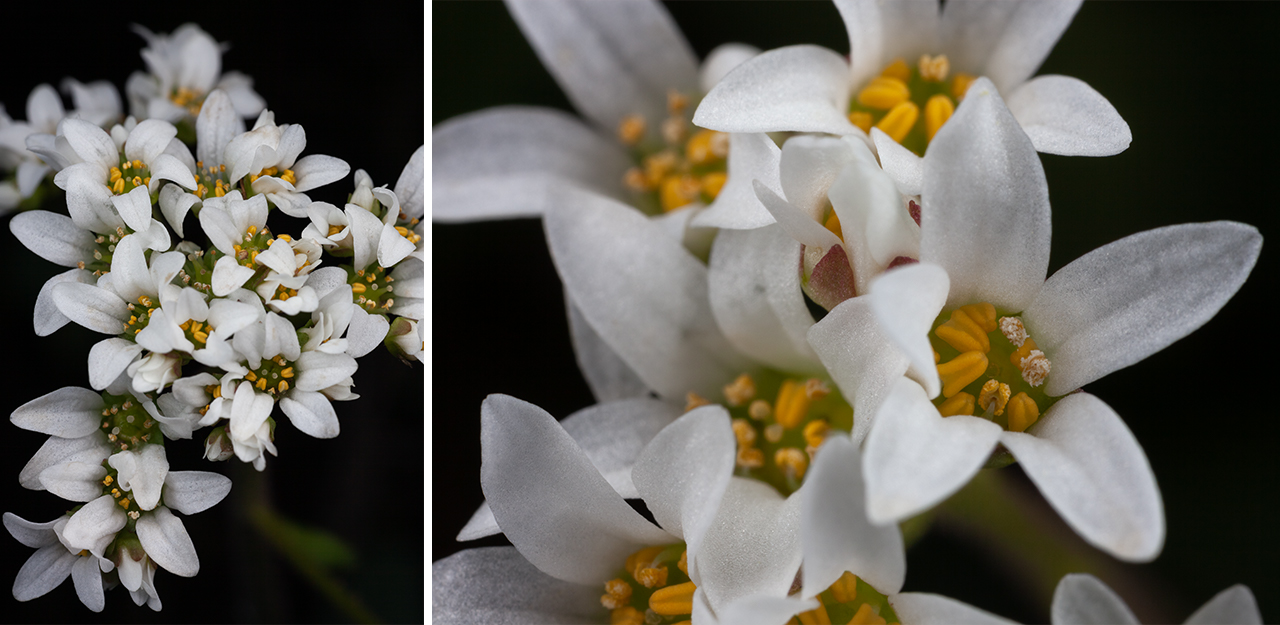
(Above): I found Early Saxifrage (Micranthes virginiensis) along rocky trails and cliff-like ledges.
One of the greatest impacts of my desire to move towards more depth in my own landscape photography has been an uncoupling of expectations. Macro and intimate photography does not require perfect light or perfect conditions. I can now be more productive behind the camera during periods where previously I had to sit on my hands and wait for Mother Nature to serve up something more interesting. I get to shoot more often. I have more content to share. I’m actively developing deeper relationships with the natural world and with the physical places that I visit. The more I learn and practice these new avenues of photography (for me), the more I encounter personal wonder from the physical world and the greater I seem to find, to this point, fulfillment behind the lens.
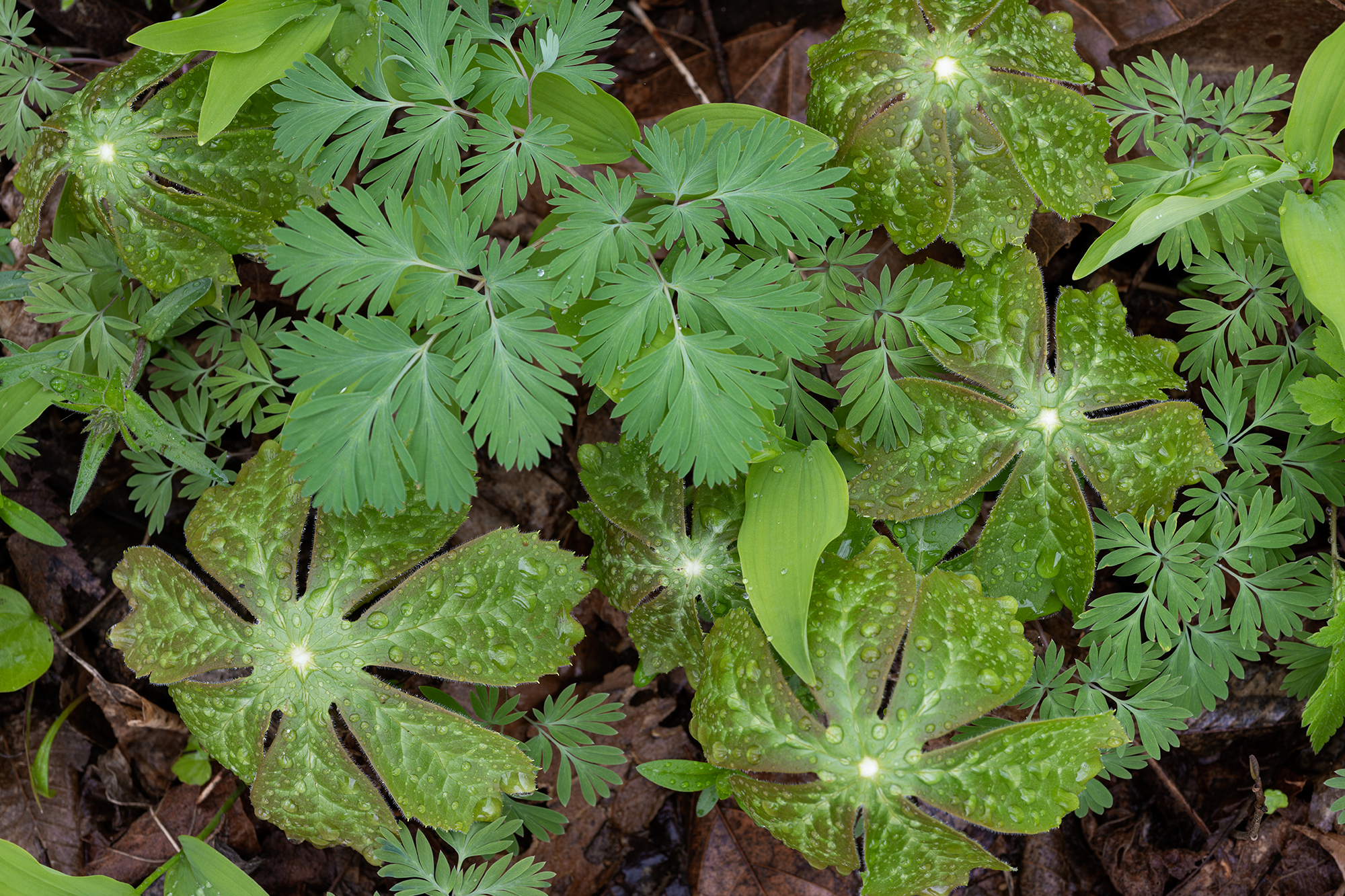
(Above): Native Mayapples (Podophyllum) grew in abundance along the Potomac Heritage Trail and amongst the other native wildflowers.
And so I find myself walking the Potomac Heritage Trail, head tilted downwards, sweeping back and forth, forth and back, scanning the ground for signs of new plant life and coming blooms. The calls of a bald eagle can be heard over the river; passerby’s see my tripod and backpack and ask if I’m here to photograph the nesting birds. I politely decline and explain that I’m here for the plants. I’m actually walking towards a hillside rich with Blue Cohosh. I didn’t know about this part of the landscape last year. It’s been a new discovery. I feel like I’m growing my understanding of the land. In that–and perhaps that alone–I feel reassured that I’m moving in the right direction. For me. Let the other chips fall as they may.
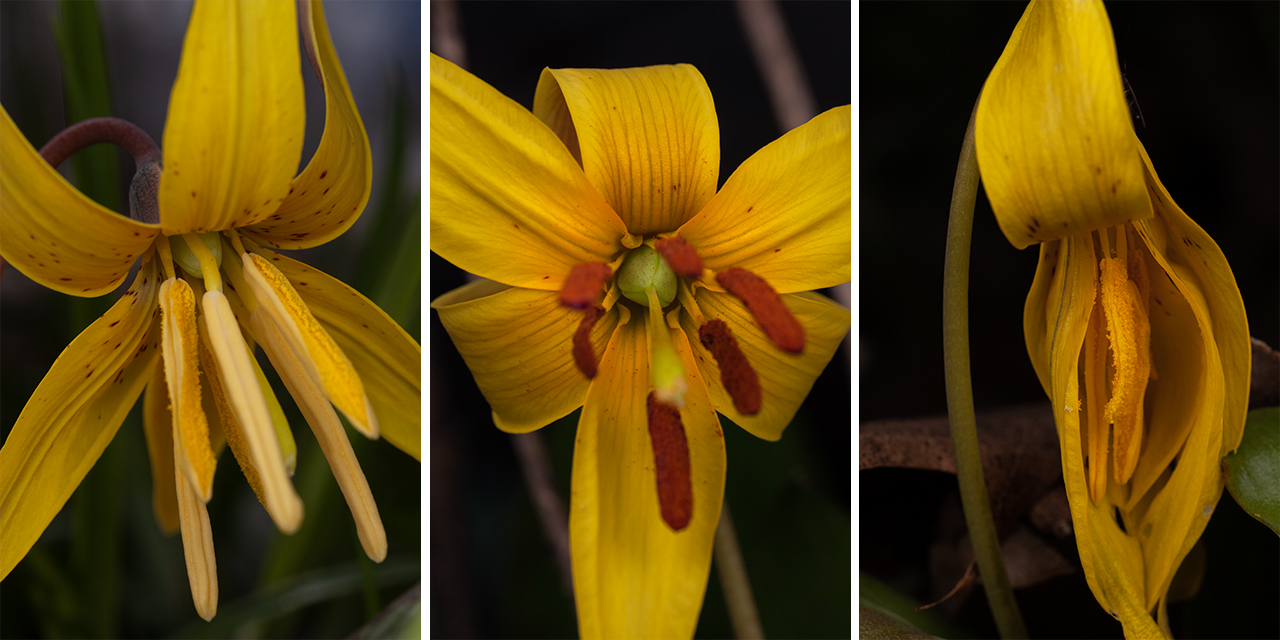
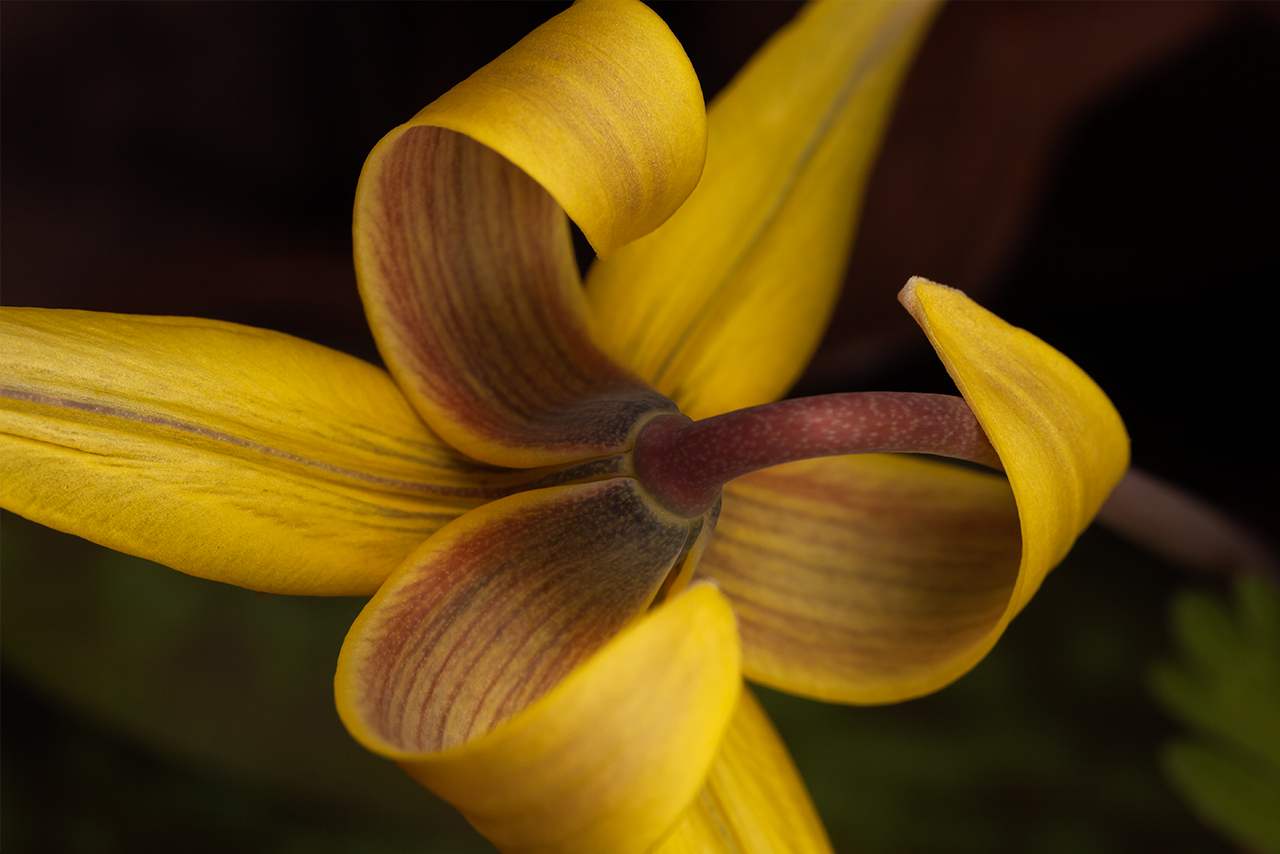
(Above): Large colonies of Yellow Trout Lily (Erythoronium americanum) were common along the Potomac Heritage Trail.



0 Comments